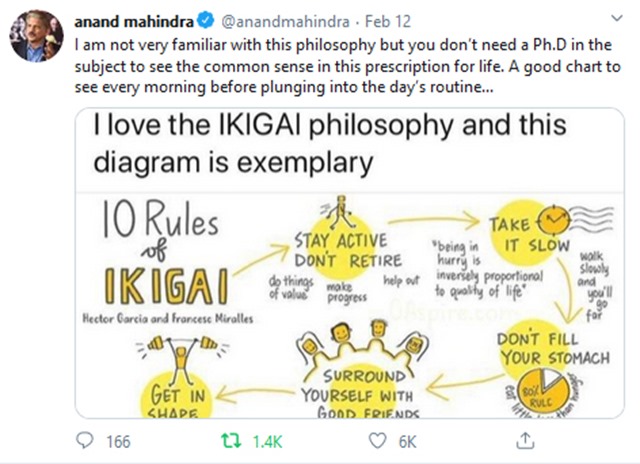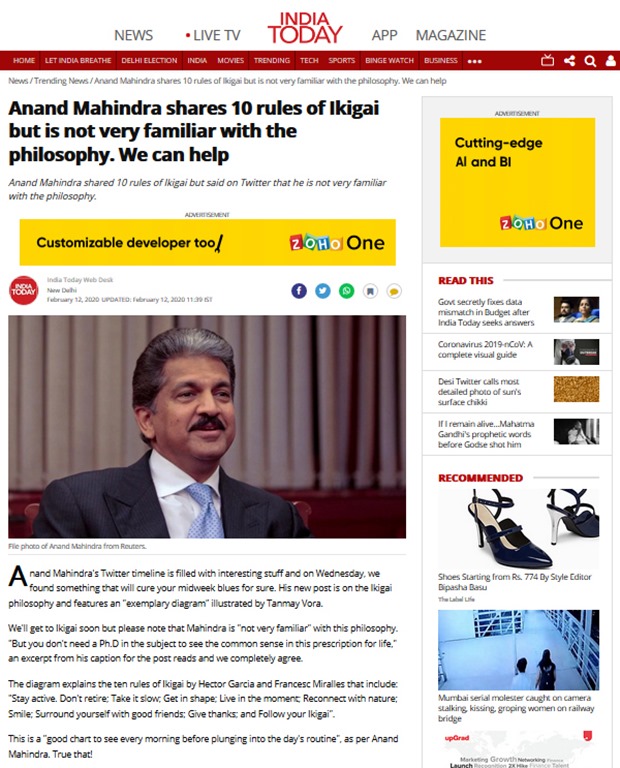Anand Mahindra Shares Ikigai Sketchnote and Thoughts on Virality
Tanmay Vora
Yesterday was one of those days when my sketch note went viral. Anand Mahindra, Chairman of Mahindra Group shared my sketchnote on Ikigai. With more than 7.4 million followers, Anand is one of the most social CEO’s in India apart from being one of the most respectable figures in business in India.
Anand’s tweet soon gathered a lot of media attention and national news/media houses NDTV, India Today, News18, Livemint, Republic News, MensXP , Mid Day and TimesNow jumped on the bandwagon to report what Anand had shared. Some of them also went on to explain the concept.
After initial euphoria subsided, I got thinking about virality of content. Why does something go viral and what does it mean?
I feel that anything going viral is a wave that rises and then subsides. While virality of content enables visibility and reach, it also subjects your work to a larger public scrutiny, which is fine too as long as the scrutiny is constructive.
What makes content go viral?
I realised that there are a few common things behind content that goes viral for the right reasons:
1) There is a lot of serendipity and luck involved. The content gets shared across social media platforms till it reaches someone really influential who blogs/tweets about it and then it catches public attention.
2) Accessibility and Simplicity plays a big role. The easier something is to understand and share (e.g. images/videos/memes shared via host of social media and messaging tools), the more it gets shared.
3) Content that appeals or talks to a larger mass at a generic level is more likely to get shared more. Relevance of content to larger group of people increases likelihood of it being shared more widely. This might also mean that when content talks to the lowest common denominator in us (e.g. our basic needs), it is more likely to get viral.
4) Quality is important element of things that go viral. What talks to people beyond the message itself is the amount of care you put in creating and attention to small details.
5) Persistence is invisible for others but critical for building anything meaningful. You have to create useful stuff for years before you get close to perfecting the medium, the message and the techniques. People often see virality (or success) in the moment, but there is many years of effort that goes into building intrinsic skills, techniques and good judgment before word-of-mouth happens.
I strongly feel that content going positively viral is only an interesting by-product – a milestone along the journey. But you don’t create and do the work keeping external motivators in the view.
In the long run, what matters truly is your passion towards what you do, the consistency of creating useful stuff and enjoying the process while you do it.
When we create for joy we find in creating without any expectation, it reflects in the work. Virality is simply a by-product.
What do you think?

